Exam 2
1/67
There's no tags or description
Looks like no tags are added yet.
Name | Mastery | Learn | Test | Matching | Spaced |
|---|
No study sessions yet.
68 Terms
Käthe Kollwitz, Self-Portrait
The medium is charcoal which smudges easily, can be used to create a range of values, and shows the texture of the paper. German Expressionism.
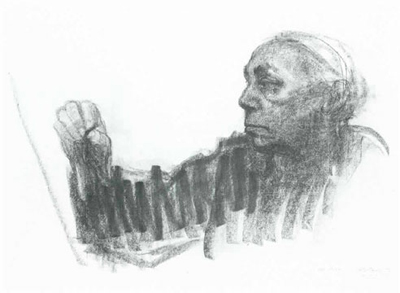
Edgar Degas, Woman at Her Toilette
The medium is oil pastels. Impressionism (shows an everyday, fleeting moment). Medium (oil pastels) allows artist to work quickly and create vibrant color and light effects.

Hall of Bulls, Lascaux Cave, France. Paleolithic
One of the oldest paintings left to us, made by: natural pigment (iron oxides; crushed berries, etc.), animal fat, and charcoal (burned bones)
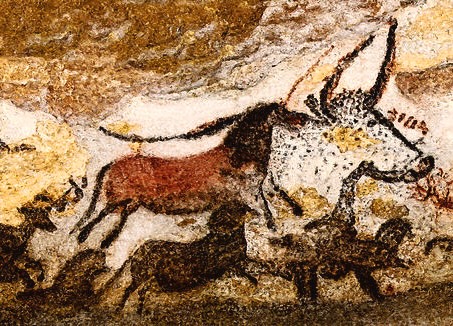
Giotto. Lamentation, from the Arena Chapel, Padua
The medium is a fesco painting.
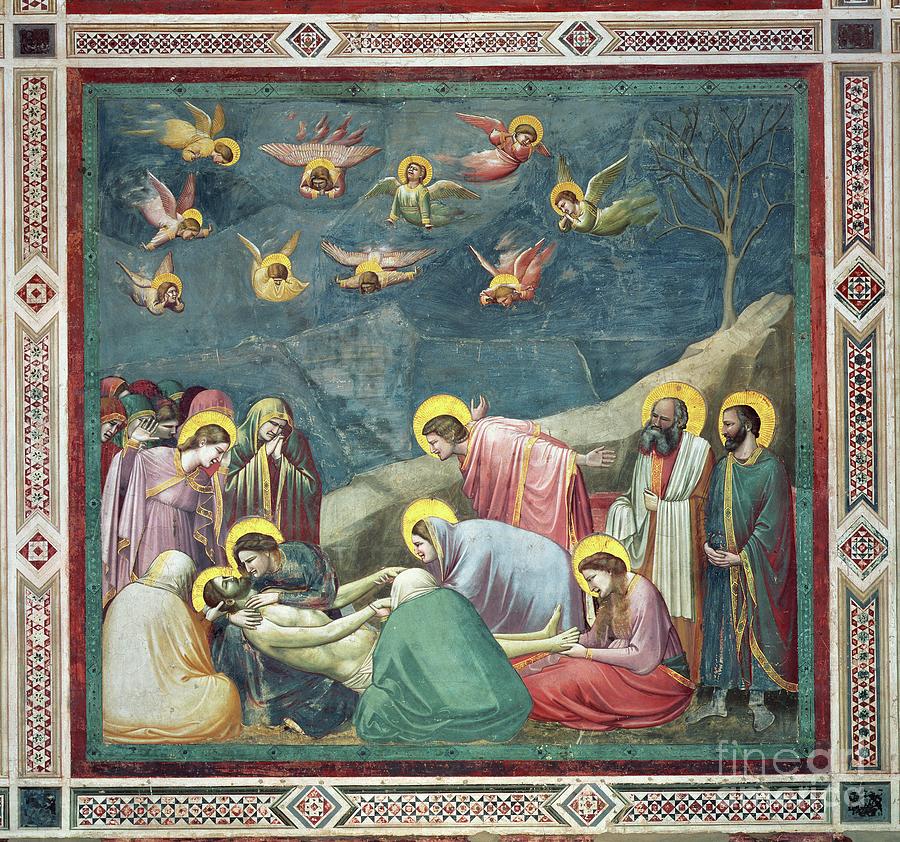
Jasper Johns. Flag, Museum of Modern Art, N.Y.
The medium is encaustic painting. Symbol of American patriotism, but may also refer to newsprint or physical act of painting.
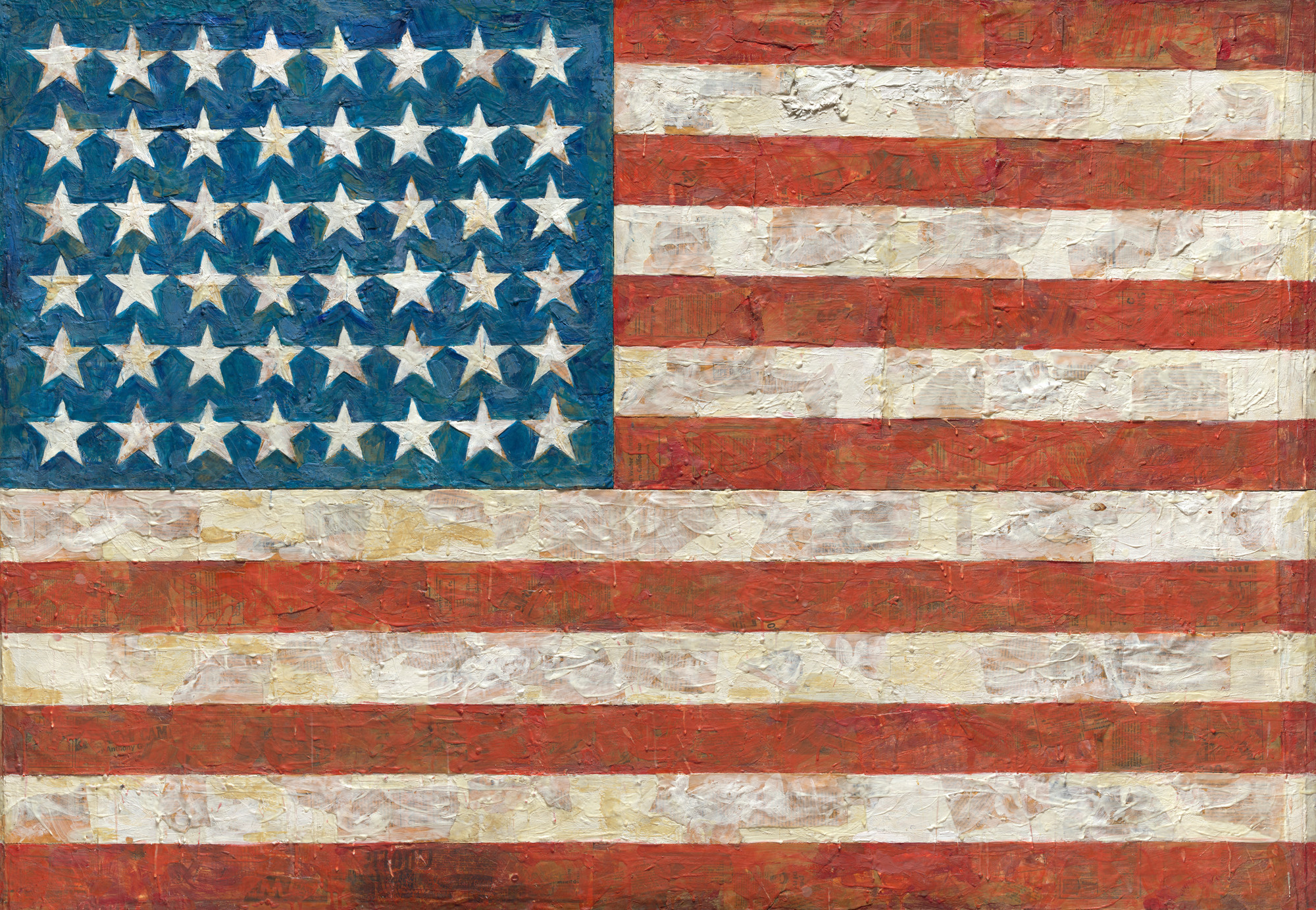
Lindesfarne Gospels. Carpet Page, illuminated manuscript
The medium is tempera on parchment. It is part of a handmade medieval book called an illuminated manuscript. Carpet Page.
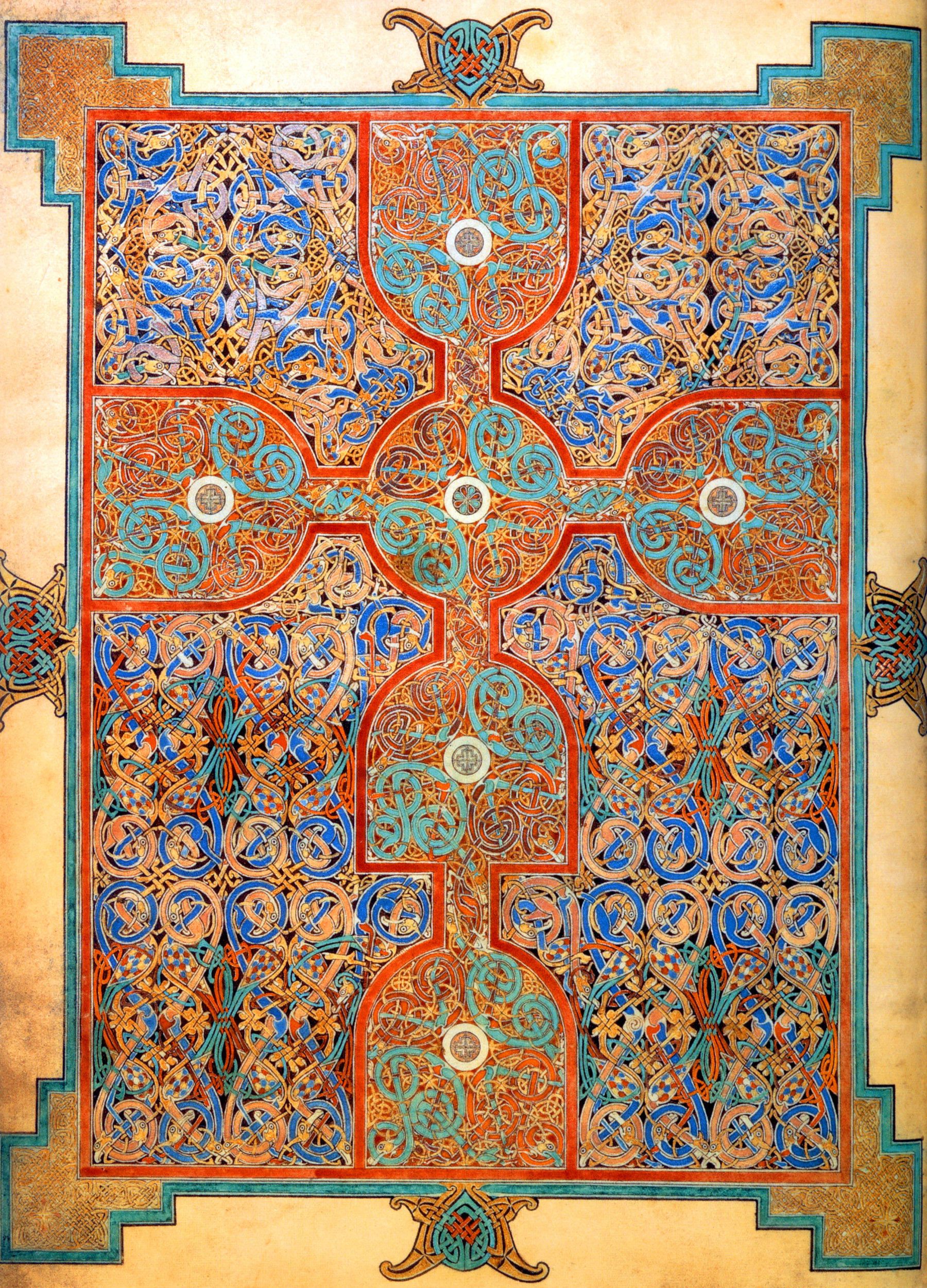
Johannes Vermeer. Girl with the Pearl Earring
The medium is oil paint, using a glazing technique. Dutch Baroque period.
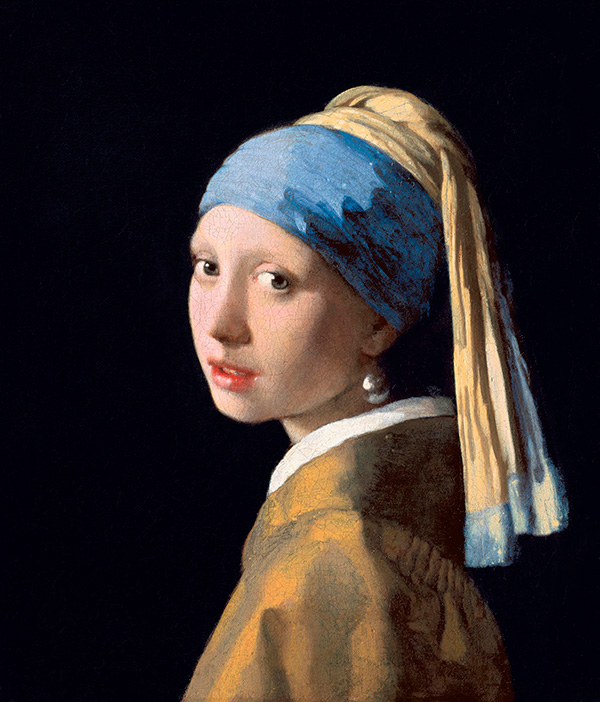
Roger Shimomura. Untitled
The medium is acrylic on canvas. Includes: References to cultural influences from the East and West, references to cultural conflict through popular culture images and allusions to Japanese internment camps, portrait of the artist at the upper left.
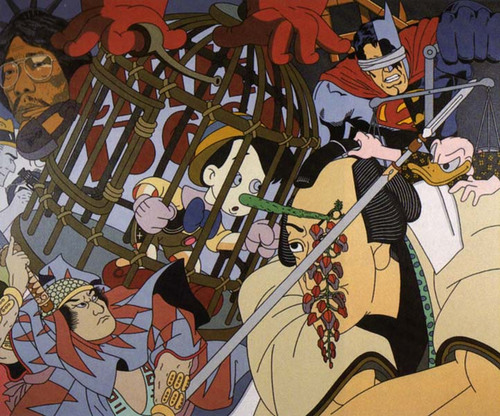
Crayon
Any drawing material in stick form (includes charcoal, chalk, pastel, wax implements).
Fluid or Wet Media
Ink; Wash.
Wash
Diluted ink that is applied with a brush.
Cartoon
Originally referred to full-scale preliminary drawings done on paper for projects such as fresco paintings, stained glass, or tapestries. Also, a humorous or satirical drawing.
Fresco
Painting on plaster.
Buon Fresco
The artist works on damp plaster. Benefits: paint binds with the plaster as it dries, so it is long-lasting. Disadvantages: have to work quickly before plaster dries; mistakes are difficult to fix; colors can be chalky, and some colors don’t bind well with the plaster.
Fresco Secco
The artist paints on dry plaster, so it is not as durable.
Encaustic
Pigment is mixed with wax. Advantages: vibrant, long-lasting colors; durable; can get transparency and luster. Disadvantages: medium must be kept warm to spread; can’t get long, expressive brushstrokes.
Tempera
Pigment mixed with egg (usually yolk only). Advantages: vibrant, long-lasting colors; can be built up in layers and used in a detailed manner. Disadvantages: quick drying; can’t get long, expressive brushstrokes or subtle gradations in tone; must prepare surface carefully and make new paint frequently.
Oil Paint
Pigment mixed with oil (usually linseed). Advantages: makes complexity and nuances of color possible; dries more slowly and so allows for more flexibility; can be used in thin layers (glazes) or thick strokes (impasto). Disadvantages: slow-drying and can lead to muddiness; has to be cleaned and thinned with turpentine or paint thinner.
Glazes/Glazing
Thin layers of oil paint built up on a surface.
Impasto
Thick application of paint to create texture on a surface.
Acrylic
Pigment and a plastic vehicle that can be thinned with water. Advantages: unlike oil paint, it can be cleaned up with water; doesn’t need special surface prep; dries a bit more quickly than oil. Disadvantages: some artists feel they can't get the same nuances and depths of color.
Oil Paint
Pigment mixed with linseed oil. Allows for nuanced colors, transparent effects, and different textures and surface effects. It dries slowly and has to be cleaned up with turpentine or paint thinner. Some artists use it with a glazing technique while others use impasto technique.
Katsushika Hokusai, The Great Wave off Shore at Kanagawa, from Thirty-Six Views of Mount. Fuji
Type of print is a color woodblock on paper. Example of relative size, overlap, and relative positions to create a sense of three-dimensional space on a two-dimensional surface. Part of a series of views of Mount Fuji, a symbol of Japan and sacred to Buddhism and Shinto.
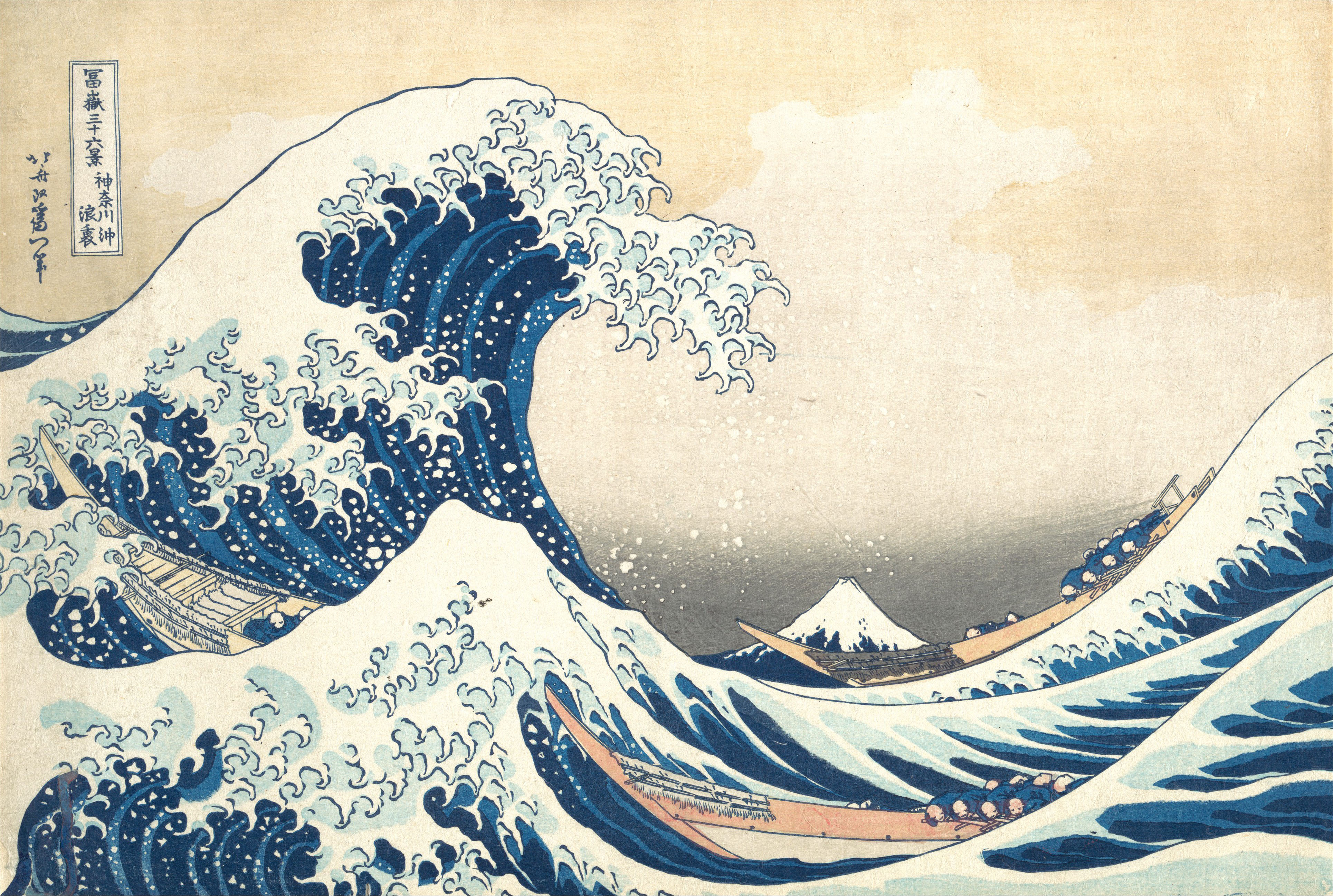
Albrecht Durer, Adsm and Eve (Fall of Man), 4th State
Type of print is a engraving. An early example of this medium on paper. 3 themes/types of knowledge: cat and mouse (game), elk and bull (humor), and parrot and ram (behavior). This is the 4th state of the print. Practical applications of engraving.
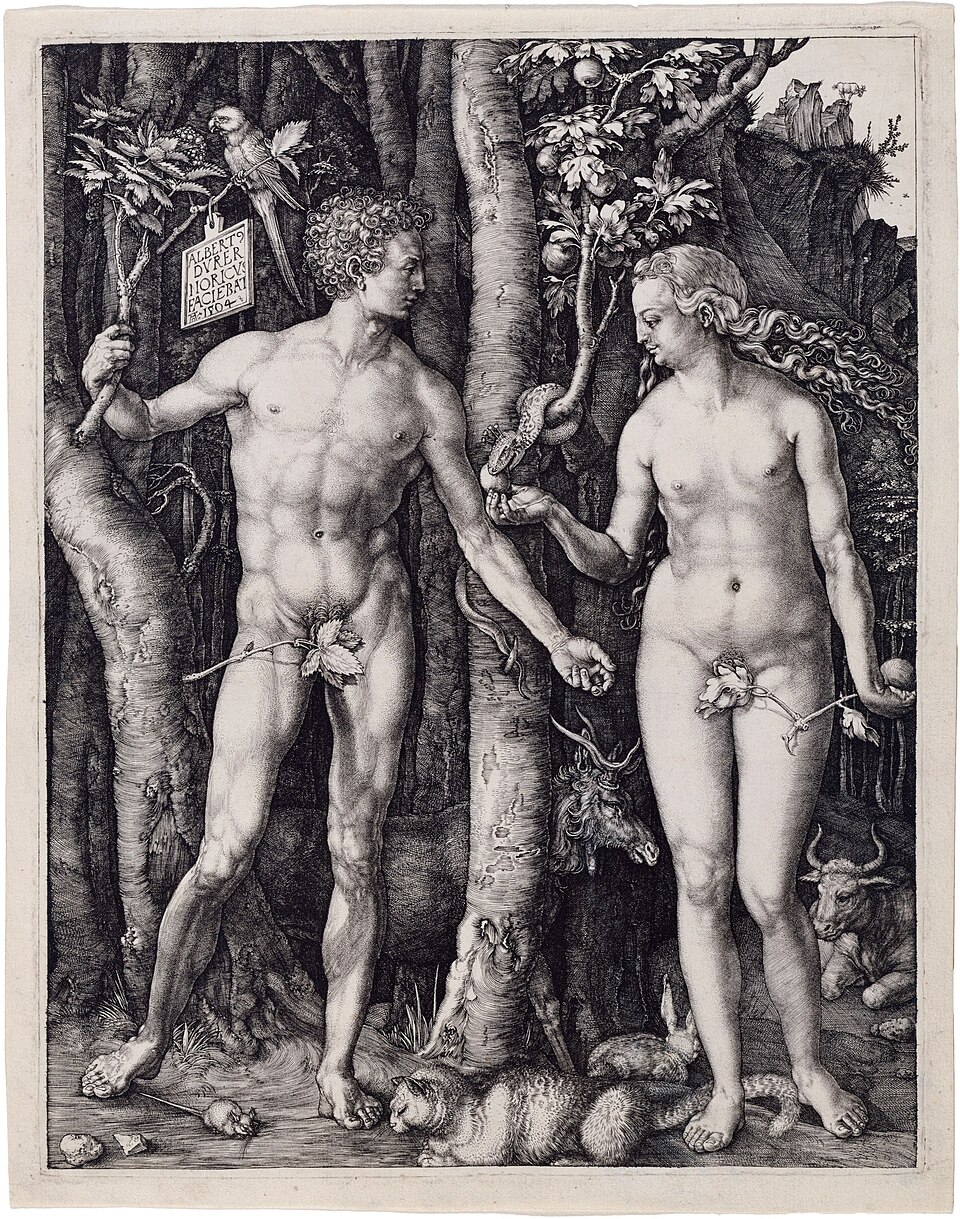
Rembrant, Christ Crucified between the Two Thieves, 4th State
Type of print is drypoint and burin techniques.
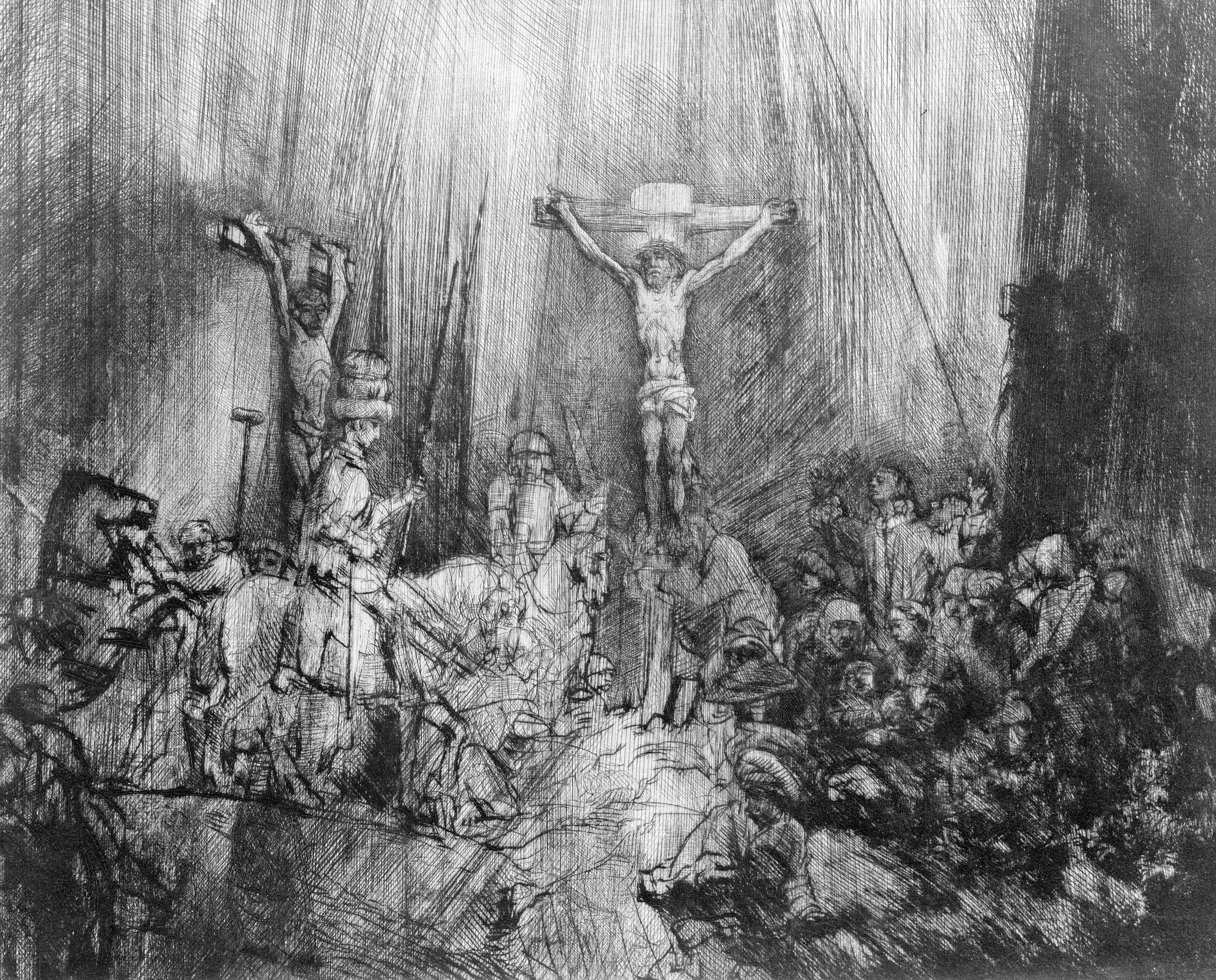
Honore Daumier, Nadar Elevating Photography to the Heights of Art
Tyoe of print is a lithograph.
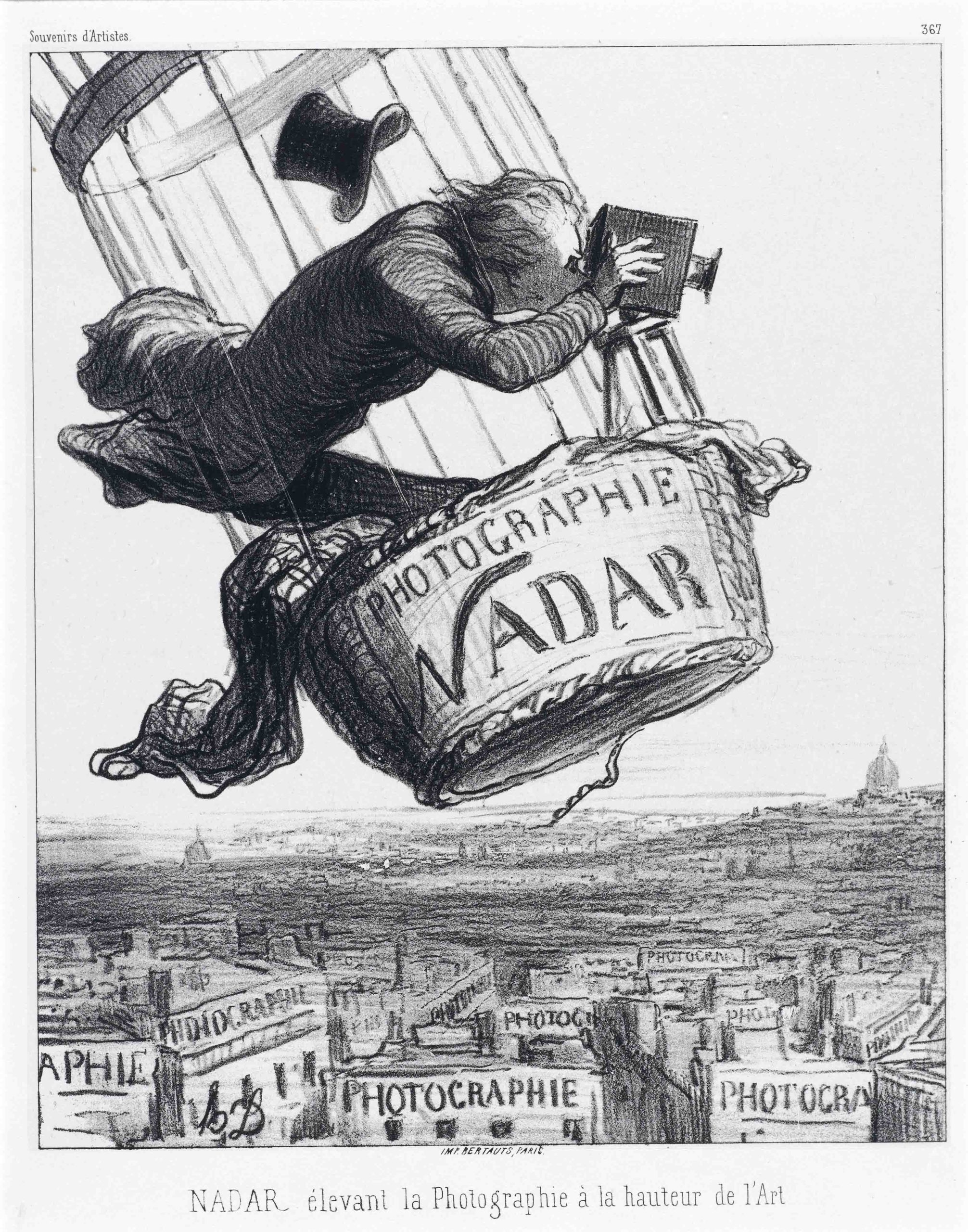
Ester Hernandez, Sun Mad
Type of print is screenprint on paper. Replaces the “sun maid” advertising image used to sell raisins with a skeleton to reveal the deadly conditions faced by farmworkers in the San Joaquin Valley. Changes in the text (“Mad” and “unnatural”) work with the image to convey message. Calaveras (skulls) relate to work of Jose Guadalupe Posada, an important founder of Mexican printmaking. T-shirts, etc.
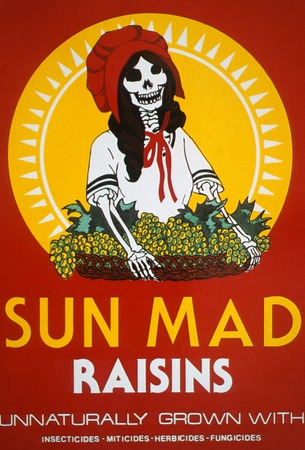
Printmaking
Allows us to study great works of art from a distance. Allows multiple originals to be made from a single plate or design. Makes artwork more affordable and available to the general public.
Relief Printing
Printmaking process in which part of the matrix (plate) is cut away to leave a raised design. The design is inked and then paper is pressed onto it to transfer the design.
Woodcut
Oldest form of printmaking, a relief process using a wood matrix.
Intaglio Printing
Printmaking process in which the matrix (plate) is incised with a design. The resulting image is not raised; instead, it is lower than the surface of the matrix. The plate is inked and wiped clean. Ink reamins in the incisions. Paper is pressed into the plate to transfer design.
Engraving (Intaglio)
Design is made using a tool called a burin. The burin creates clean-edged lines metal plate, which form the design to be printed.
Drypoint (Intaglio)
Engraving with a drypoint needle. The needle is dragged across the surface, leaving a rough edge or metal burr along the incised line. The burr creates a soft line instead of a crisp line.
Etching (Intaglio)
Photo-etching: lines are incised into the plate using acid.
Mezzotint/Aquatint (Intaglio)
Plate is roughened with pits made by a rocker tool (mezzotint) or acid (aquatint). The pits hold the ink and create a tonal effect on the finished print.
Edition
Number of prints struck from a single matrix; usually at the same time.
State
Impressions pulled from a version of a matrix; each time the matrix is changed, a new state is created.
Planographic Printing
Printmaking process in which the matrix is not cut.
Lithography (Planographic)
Design is drawn with a greasy crayon on a stone slab.
Silkscreen/Serigraphy (Planographic)
Design is made on a mesh or screen matrix; ink is pressed through the screen onto a printing surface placed underneath the matrix.
Ansel Adams, Moon and Half Dome, Yosemite National Park
Artist is known for his photographs of national parks and for his contribution to landscape photography. The photograph documents a site, but it is an aesthetic image, too (the artist focuses on created an awe-inspiring, beautiful image). He said, “You don’t take a photograph, you make it.” In a photograph, the artist's point of view is exercised through the way he frames, lights, exposes, and develops it.
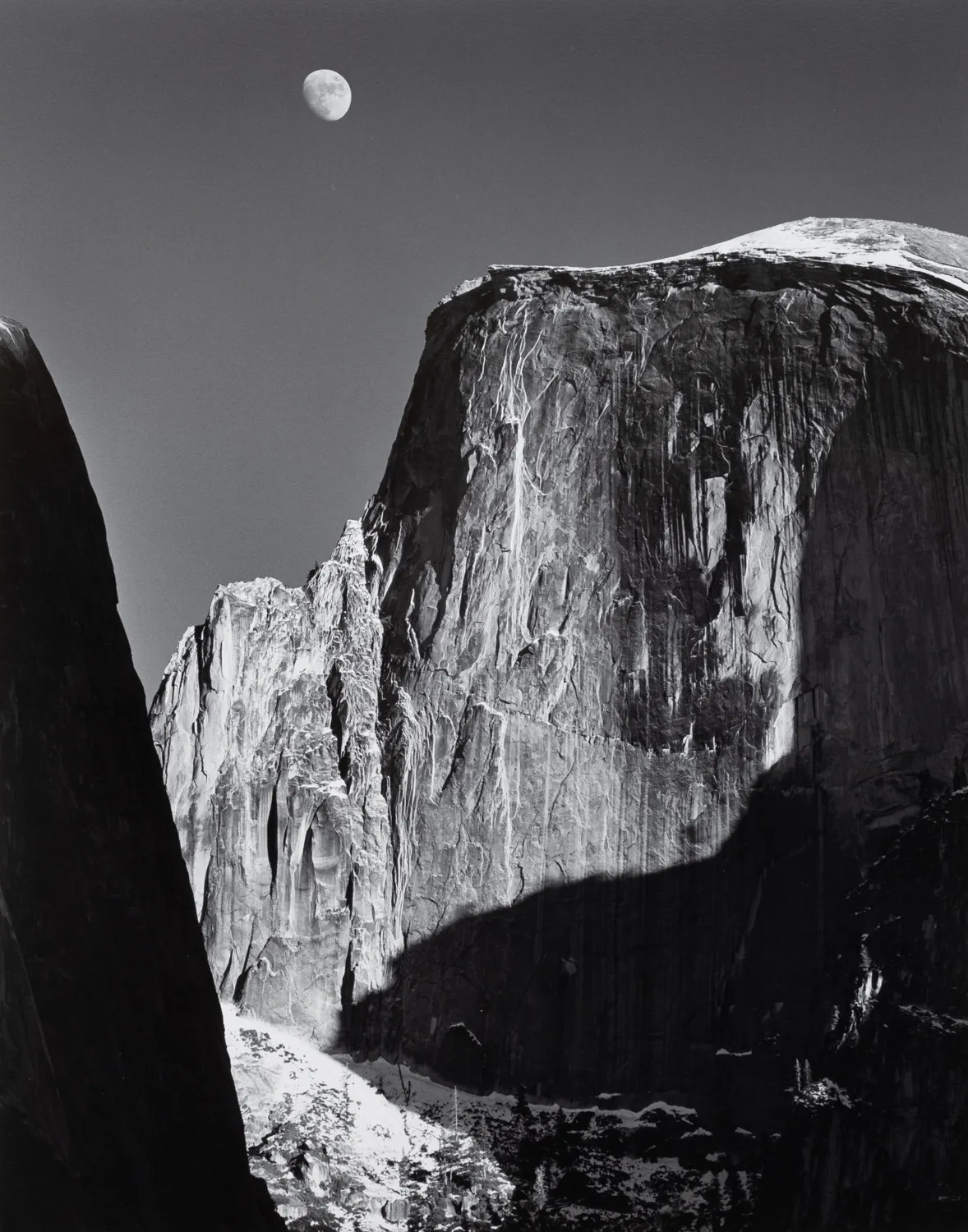
Louis-Jacques-Mandé Daguerre, The Artist's Studio
An example of a daguerreotype, made on metal; one of the very first photographs. Advantages: clear, crisp image that doesnt fade; cheaper than a painting so affordable for more people. Disadvantages: long exposure time; only creates a single image; fragile/flakes easily.
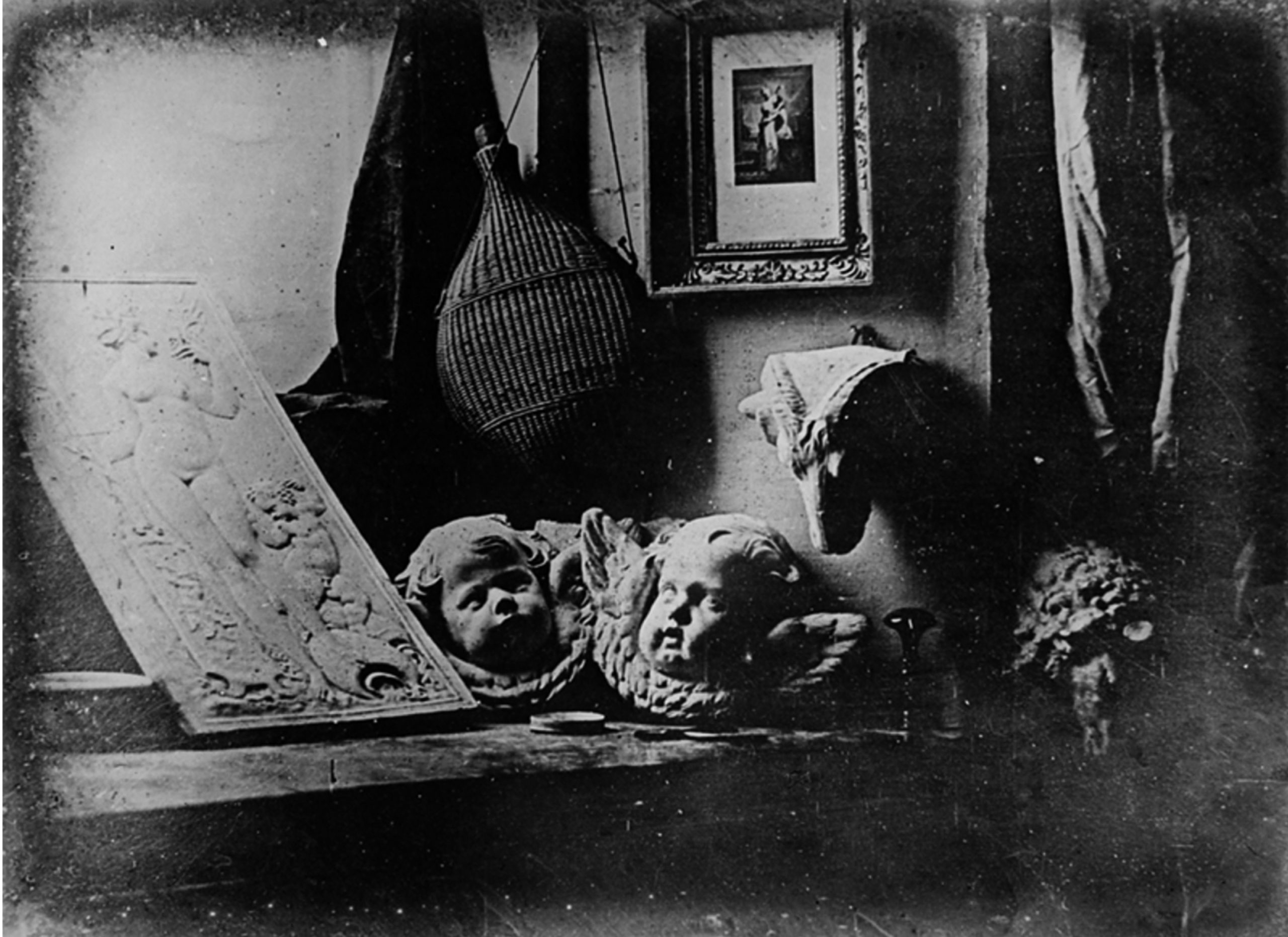
Dorothea Lange, Migrant Mother, Nipomo, California
Example of photojournalism. Part of a government-funded documentation of the Great Depression. Artist shows woman as worried, suffering, and yet also with dignity. Emphasizes plight of the people by: cropping the image close to the figures so you have to focus on her face; showing grainy, gritty quality of the clothes; showing the woman has a support for her children.
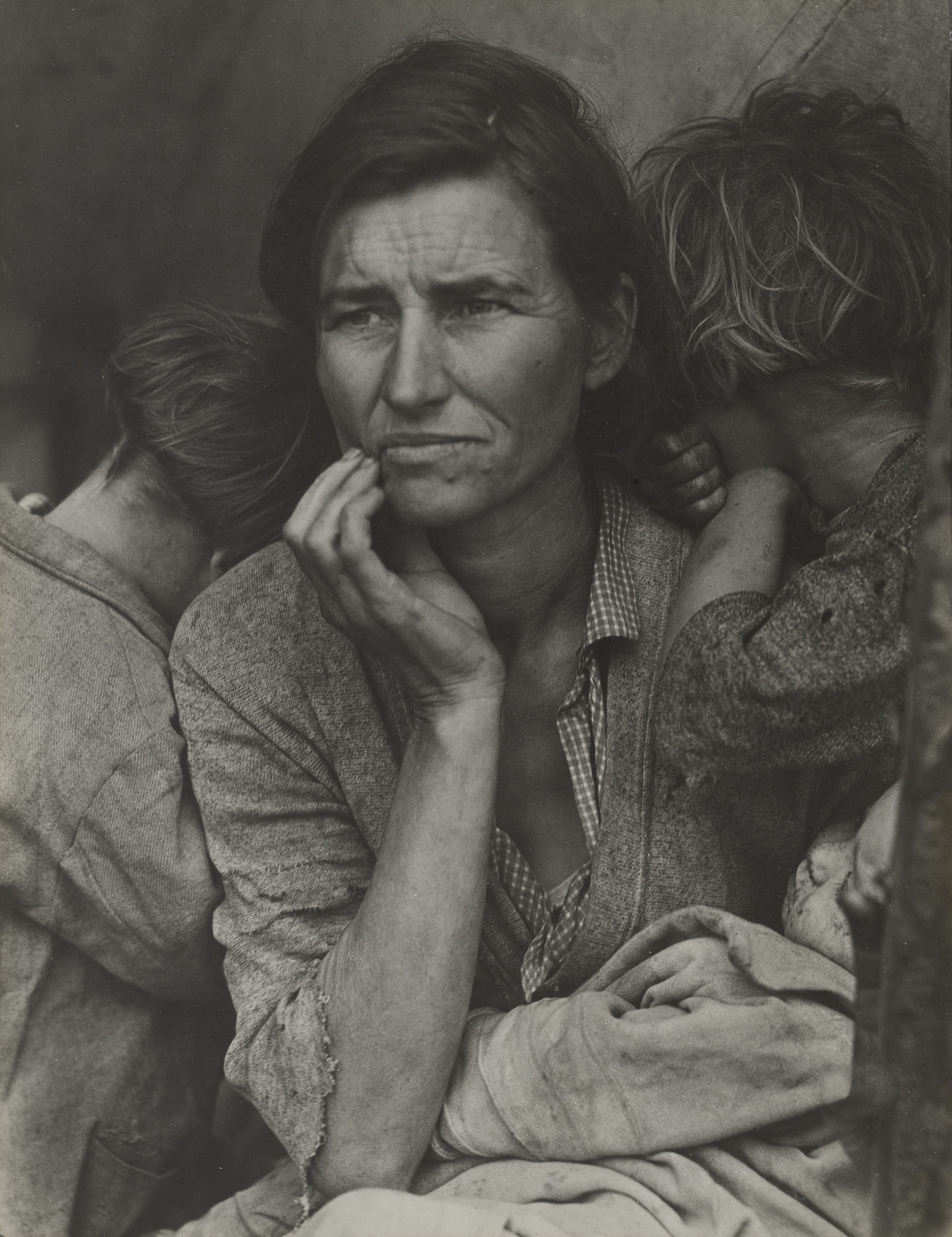
Gordon-Parks, American Gothis, Washington D. C.
Based on American Gothic by Grant Wood. Shows Ella Watson as a symbol of the American Black worker. Taken when the photographer started working for the FSA (Farm Security Administration). Part of a series on the same woman depicting her struggles and daily life. Message artist wanted to convey through the photo.
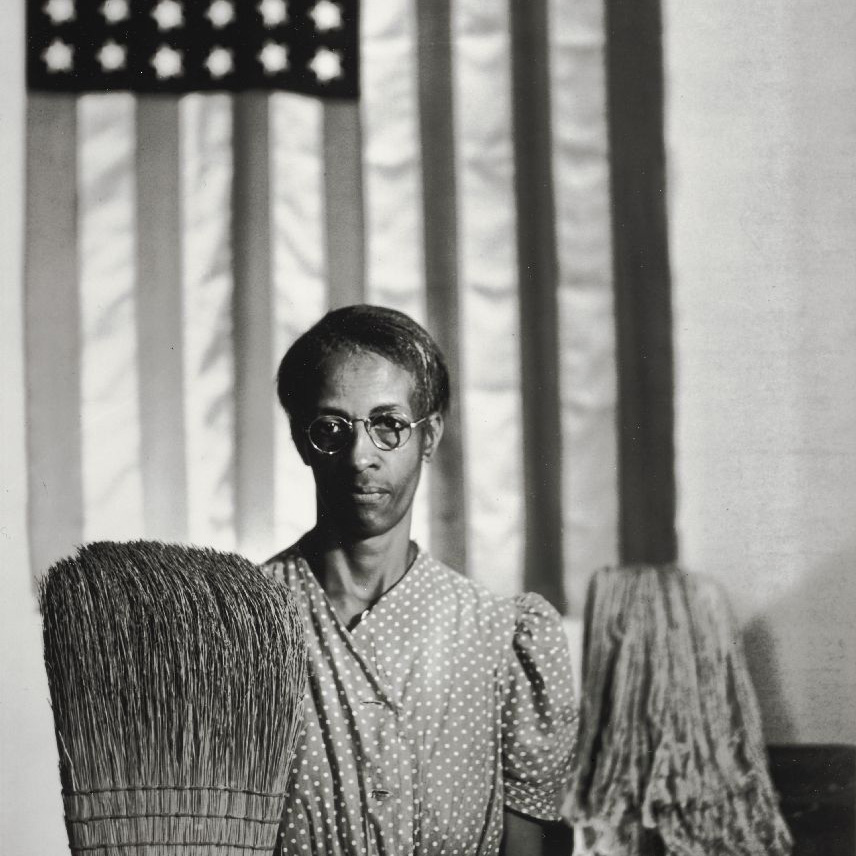
Joe Rosenthal, Old Glory Goes Up on Mt. Suribachi, Iwo Jima
Example of photojournalism. Pulitzer-prize winning photograph of Marines raising flag in Iwo Jima during World War II. A staged photograph, but meant to symbolize American heroism and triumph over adversity. A very influential image that was referred to in a postage stamp, a war loan poster, a movie poster, and even a sculptural monument commemorating Marines in World War II.
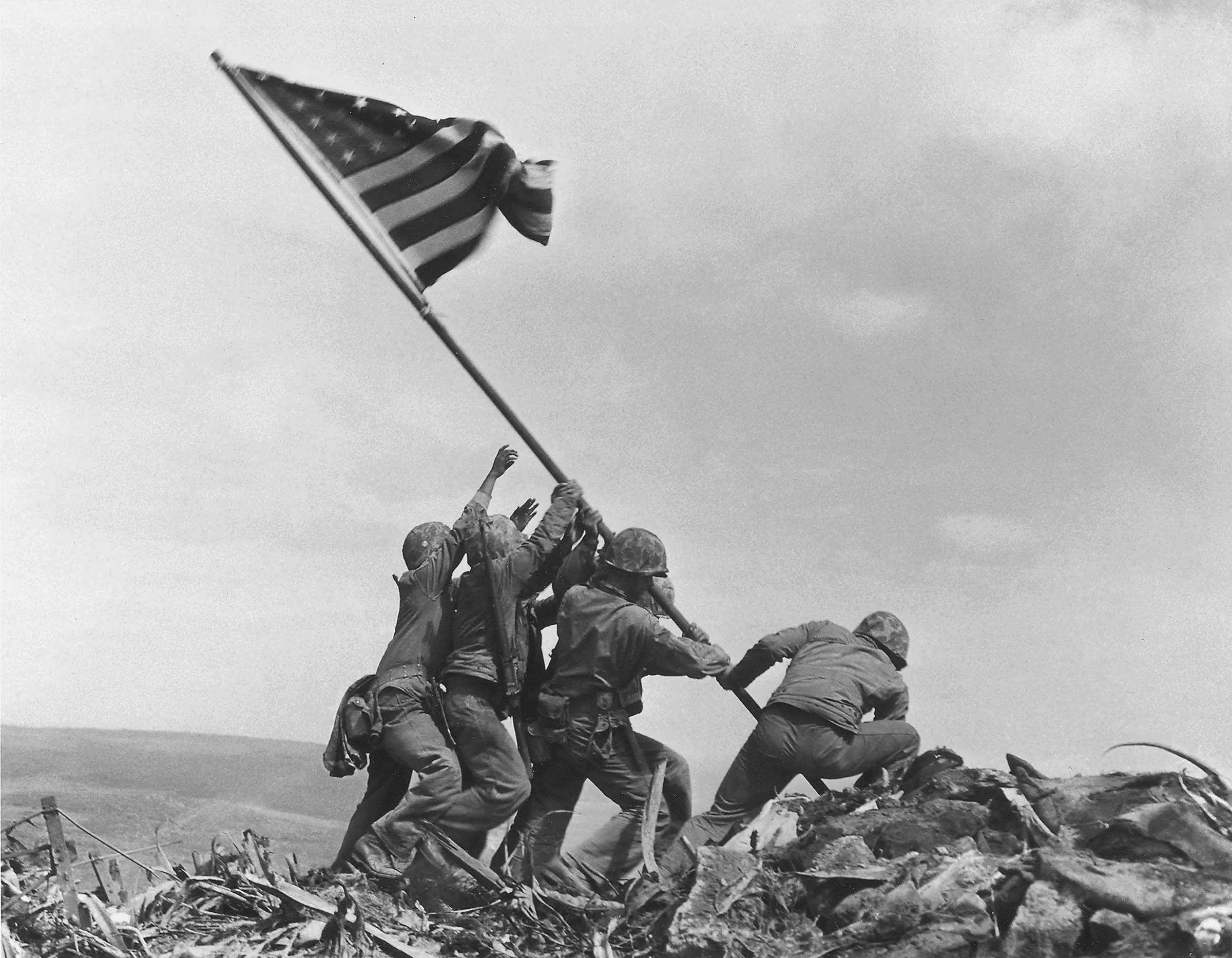
Edward Steichen, The Flatiron Building-Evening
Example of photography as art; pictorialism. Pictorialist movement. Artist is more concerned with the artistic tone and quality than with visual details about the building itself. Artist, along with Stieglitz, was a strong supporter of modern art and exhibited photographs alongside painting and sculpture by people such as Picasso.
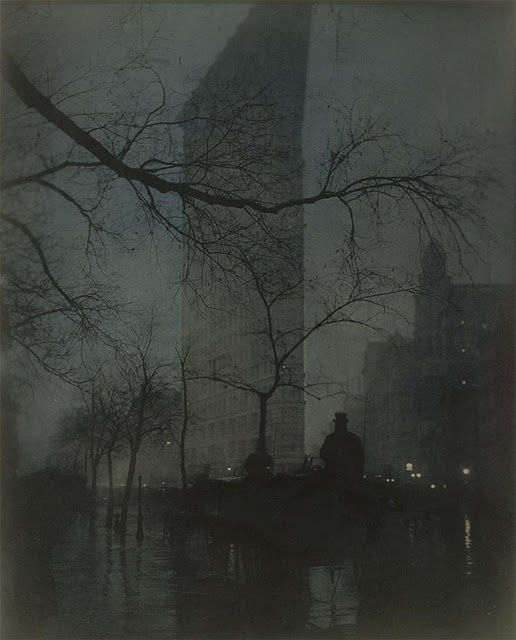
Cindy Sherman, Untitled (Film Still #14)
Photographs in this series are staged to look like stills from films. The artist is the model for all of these works, but they are not really self-portraits. Instead, she poses herself as different stereotypes or characters from film. Deals with issues of gender and identity.
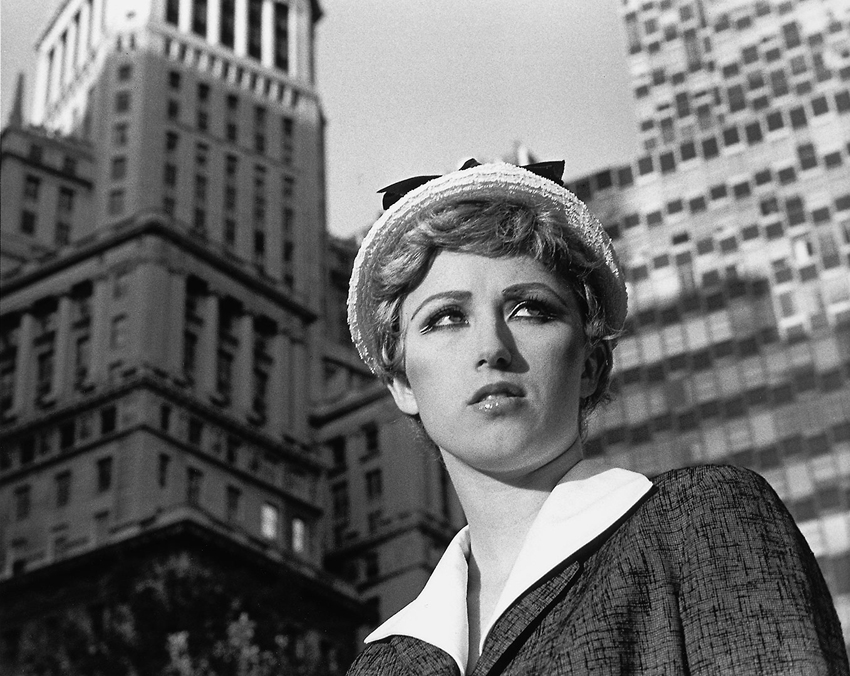
David Hockney, Pearblossom Highway 11-18th April 1986 (2nd Version)
Example of photocollage. Large-scale work in which the artist considers the how we gather visual information in the world (a constant flood of data from which our brain makes sense of the world). Takes several close-up shots and then arranges them in a landscape scene. Captures the experience of driving down a desert highway, with its mirage-like quality and the sense of motion he creates in the image.
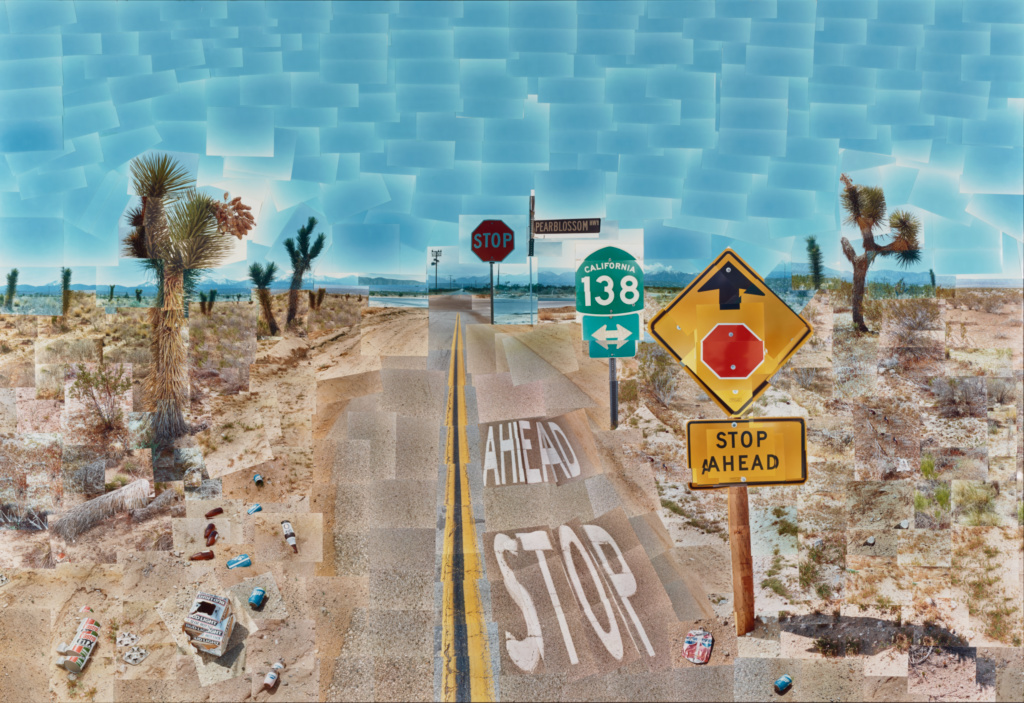
Bill Viola, Crossing
The medium is video installation art. One part shows a man gradually consumed in flame; another shows him covered with water. Artist tries to move the viewer into a spiritual realm by: slow motion, large-scale image and sound; symbols of baptism and rebirth. Wants to show that technology doesn’t have to be empty and soulless, that it can actually affect people in a spiritual way. Themes of rebirth, baptism, renewal.
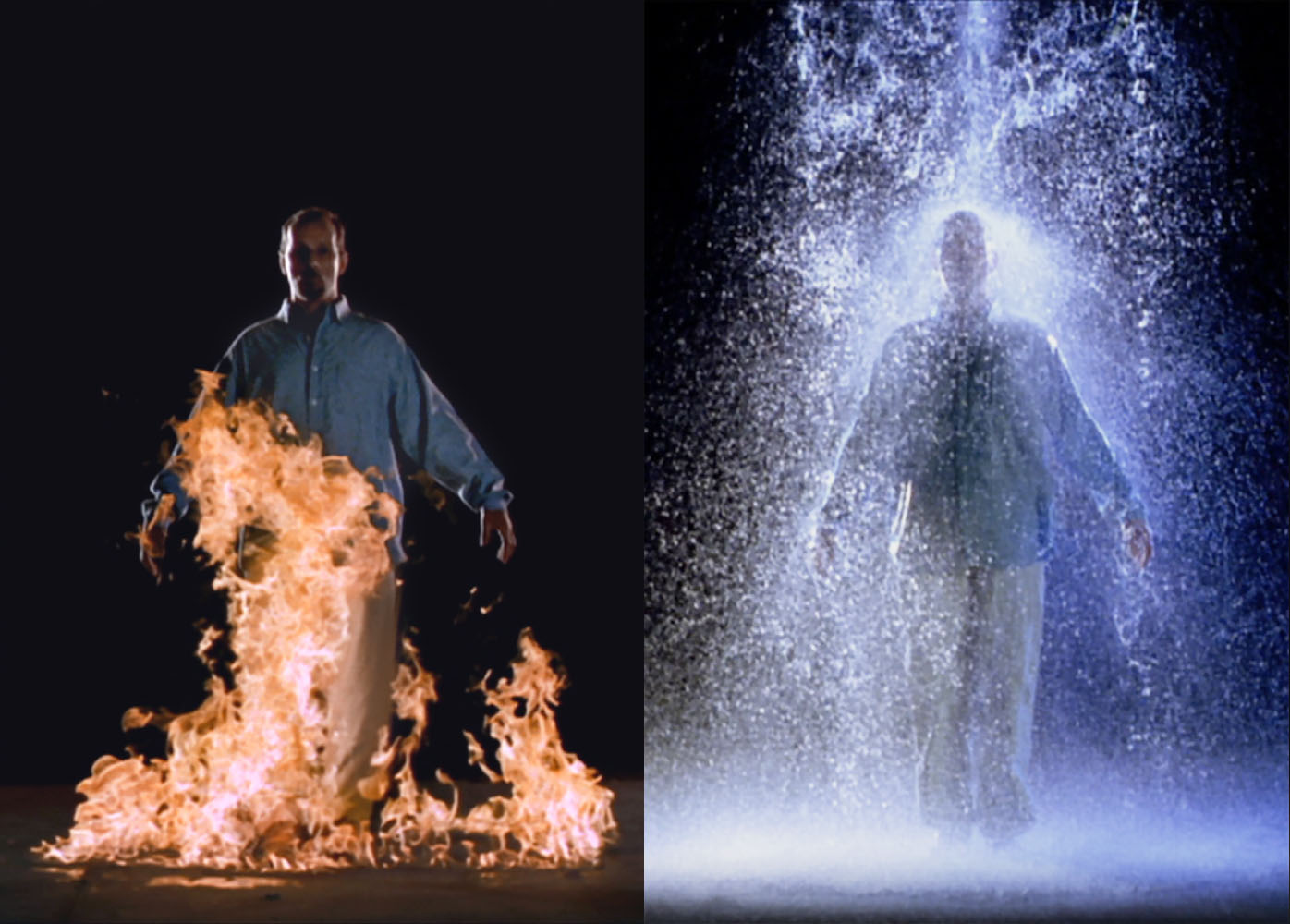
Camera Obscura
Means “dark room”; a tool used by artists as early as the Renaissance, which focuses light from an object through a tiny hole and projects it on a distant surface.
Photojournalism
Use of photography to tell a news story using pictures, usually with words to support the visual information.
Daguerreotype
One of the earliest types of photographs, produced on a metal plate. Invented by Daguerre. Advantages: clear, crisp image that doesn’t fade; cheaper than a painting so affordable for more people. Disadvantages: long exposure time; only create a single image; fragile/flakes easily.
Negative
Image made on film or a thin sheet of glass, which can then be used to make multiple prints of photograph.
Woman of Willendorf, Paleolithic Culture, Limestone
One of earliest sculptures still in existence. Carved sculpture in the round. Small and portable (could be carried from place to place). May be related to fertility and abundance, but we don’t know for sure-no written record; other possibilities include; portrait, symbol of wealth, trade item, or learning tool.
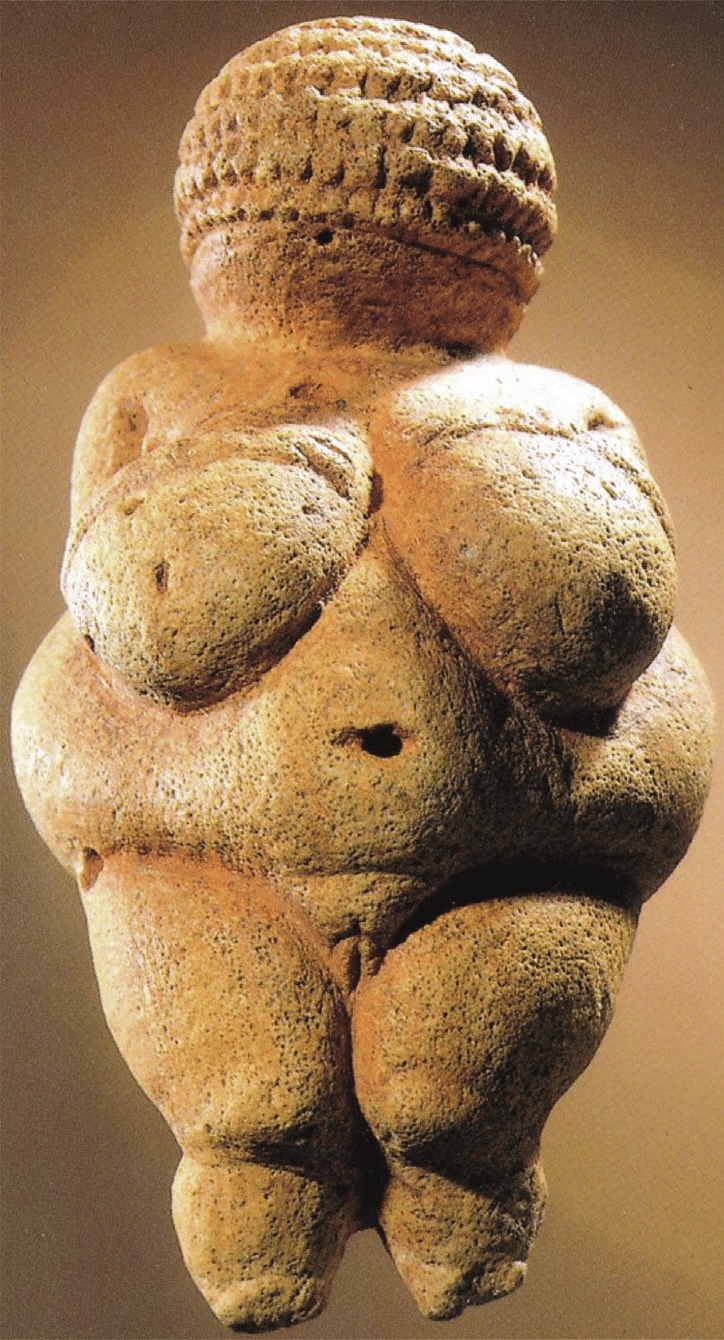
Michelangelo, Pieta, Marble
Made by carving (subtractive process). One of the artist’s first commissions for a full-scale marble sculpture; he signed his name on the virgin Mary’s sash. Subject is Mary grieving for her dead son, Jesus, on her lap. Artist adjusts the proportions of the figures and creates extra folds of drapery to make the sculpture seem balanced and serene. Pyramidal composition. Today, it can be seem behind protective glass in St. Peter’s Basilica, Vatican.
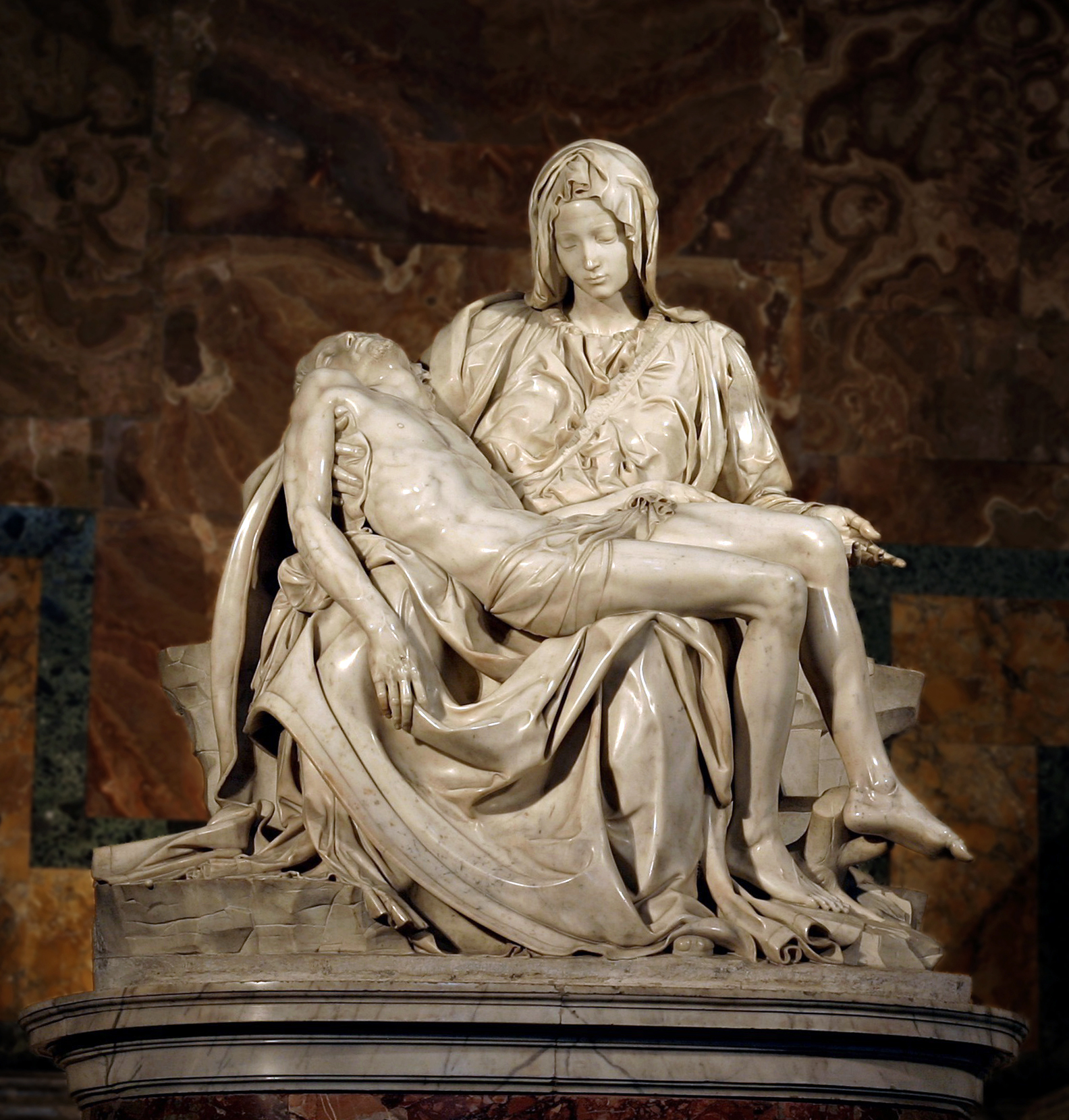
Edgar Degas, The Little Dancer, 14 Years Old, Bronze and Mixed Media
Made using the casting method. Original was modeled in colored wax. Only sculpture the artist exhibited during his lifetime. Some people thought it was crude or ugly in part for its appearance and in part for its subject, but others praised it. Shows girl from the Opera ballet in an awkward pose during a quiet moment. Example of mixed media; she wears a real tutu and ribbon. Multiple originals of this work were made.
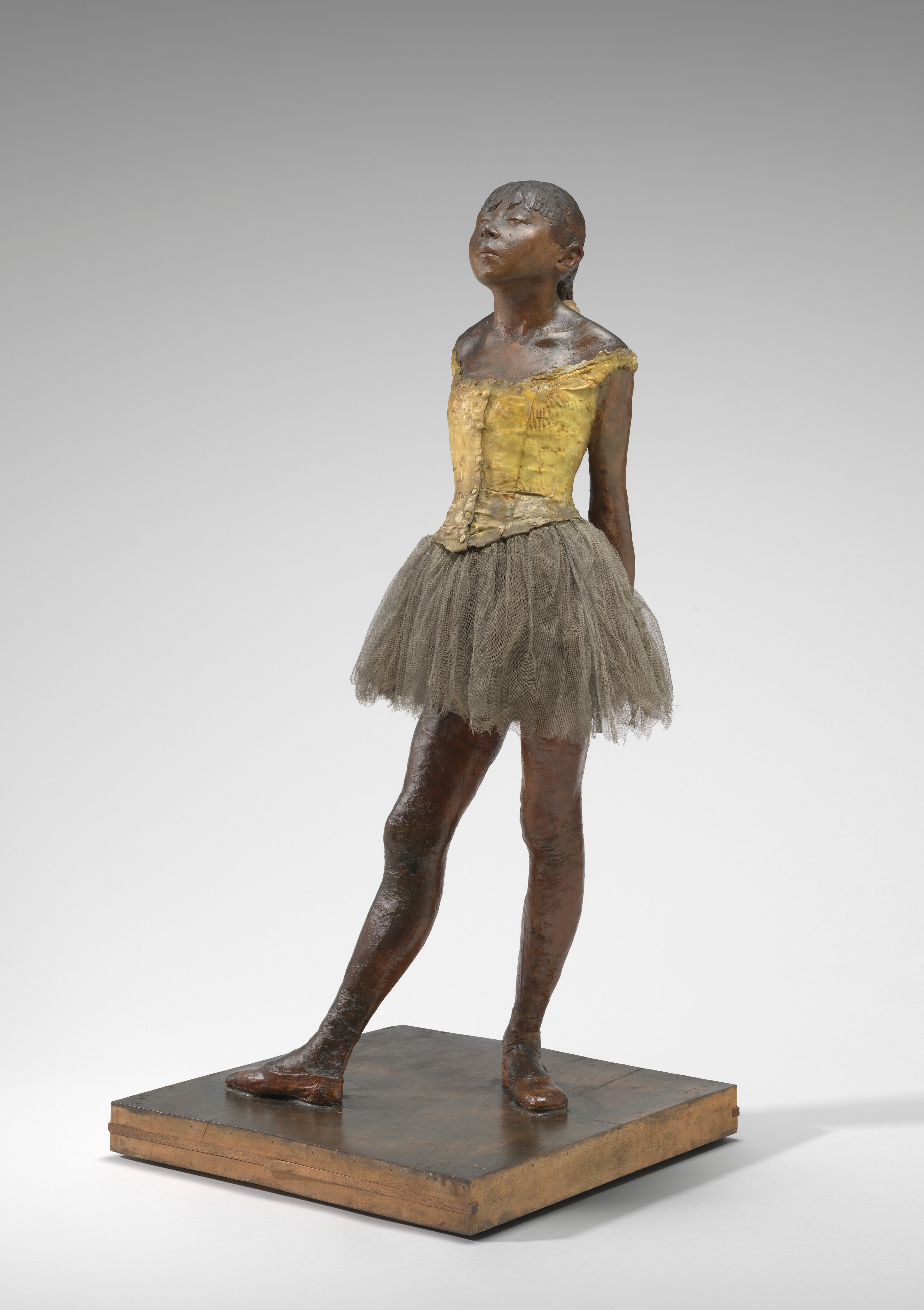
Claes Oldenburg, Soft Pay-Telephone, Vinyl and Mixed Media
Example of constructed sculpture. Artist creates a familiar object in an unfamiliar material to challenge our expectations of it.
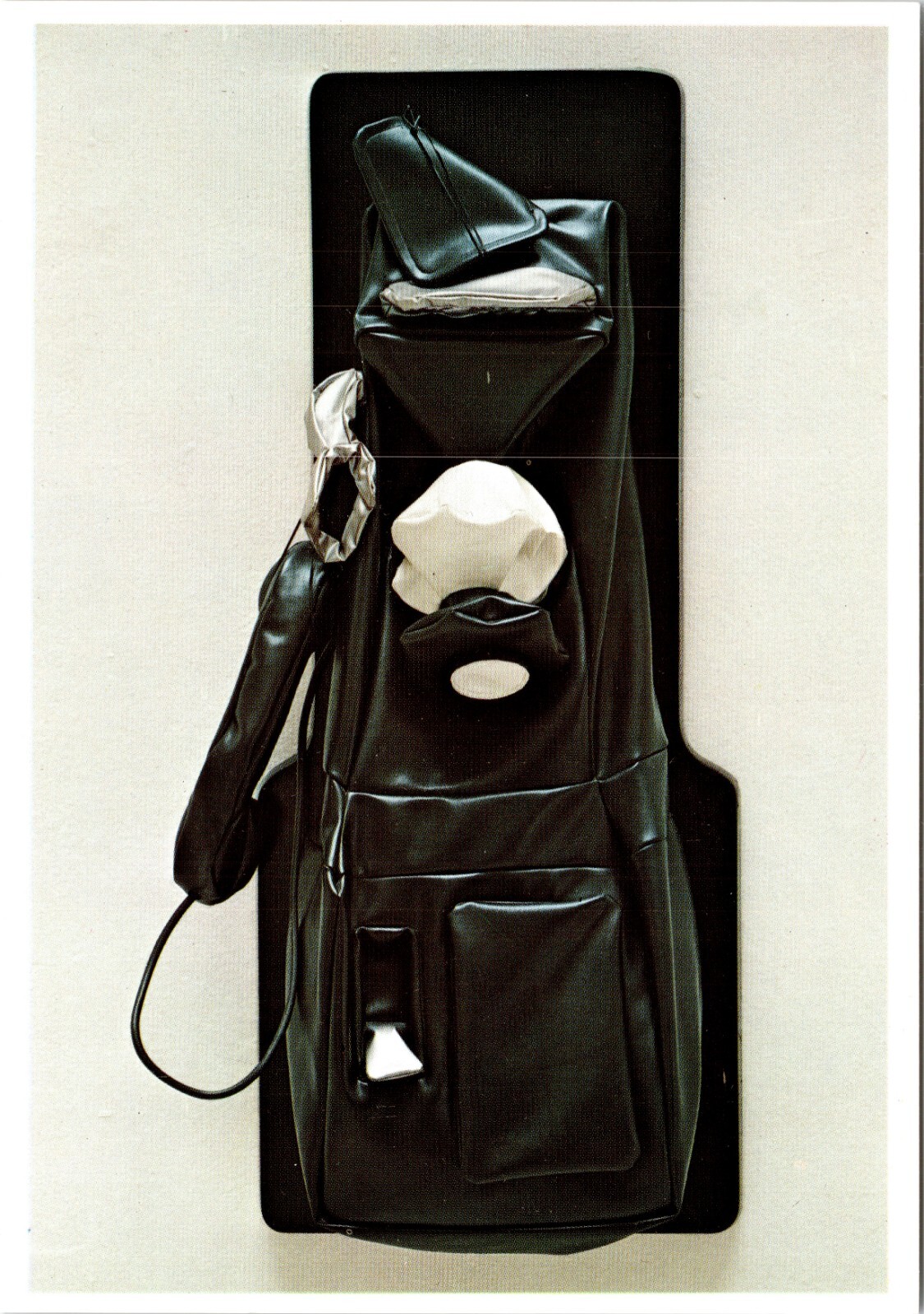
Pablo Picasso, Bull’s Head
Example of assemblage (or construction) and casting. Gives us multiple insights into Picasso’s interests as an artist: wit/humor; the iconography of the bull and the bullfight related to his connection to Spain (he used the bull as a symbol for Spain and sometimes for himself). Relates to his interest in abstraction, searching for the most simple, elegant way to realize the essence of an object.
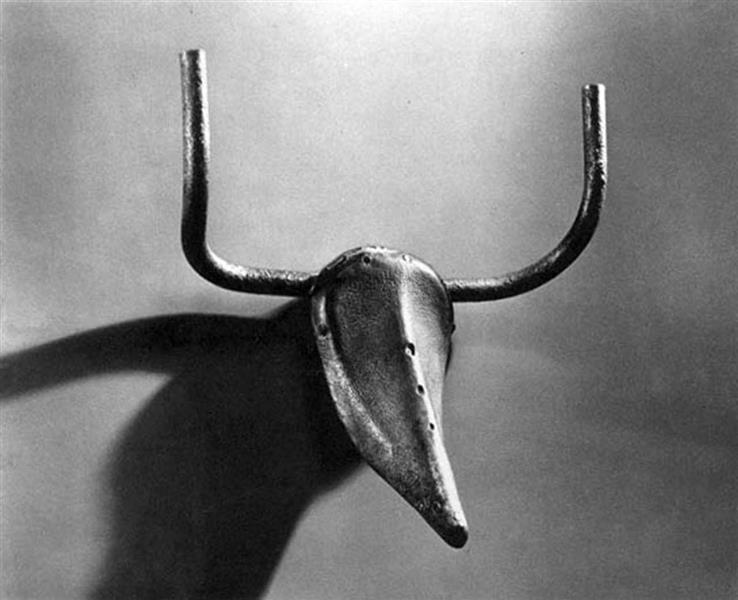
Janine Antoni, Gnaw
Made of non-traditional materials; chocolate and lard. An installation. Explores body image and consumption (food and consumer items).
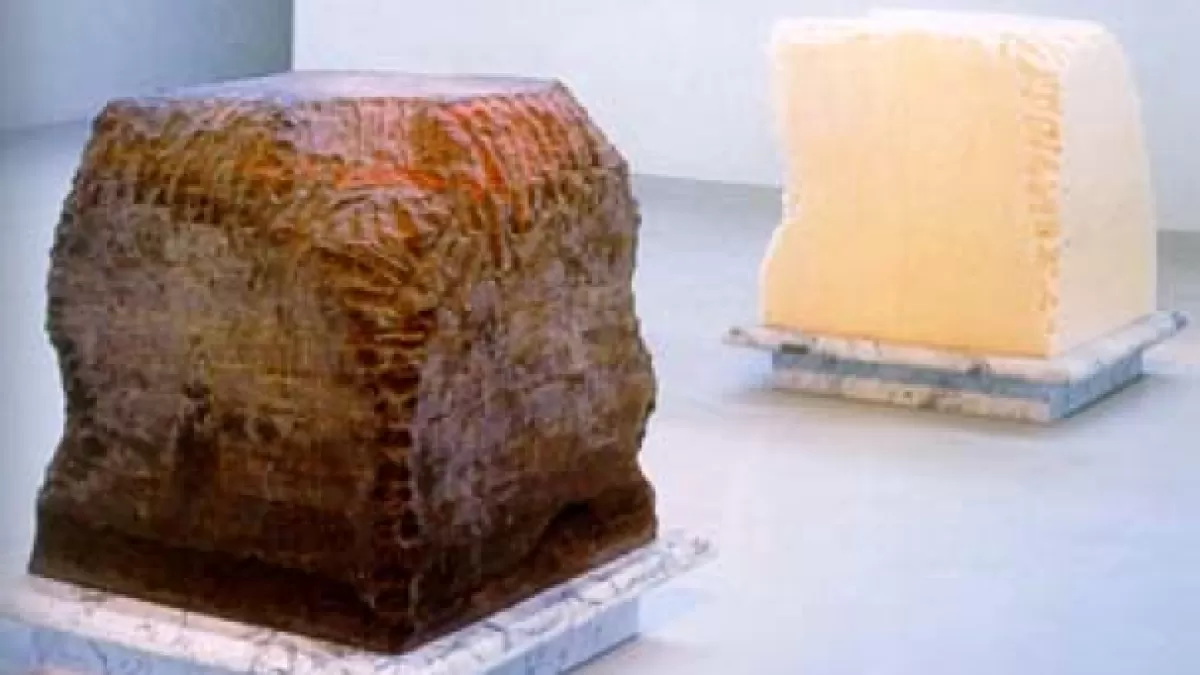
Robert Smithson, Spiral Jetty, Great Salt Lake, Utah
Example if site-specific sculpture. Located at Rozel Point, a remote part of the Great Salt Lake. Land art (made out of the earth itself). Artist wanted to take art out of the gallery and into the environment. He was interested in how it would change over time; called process art.
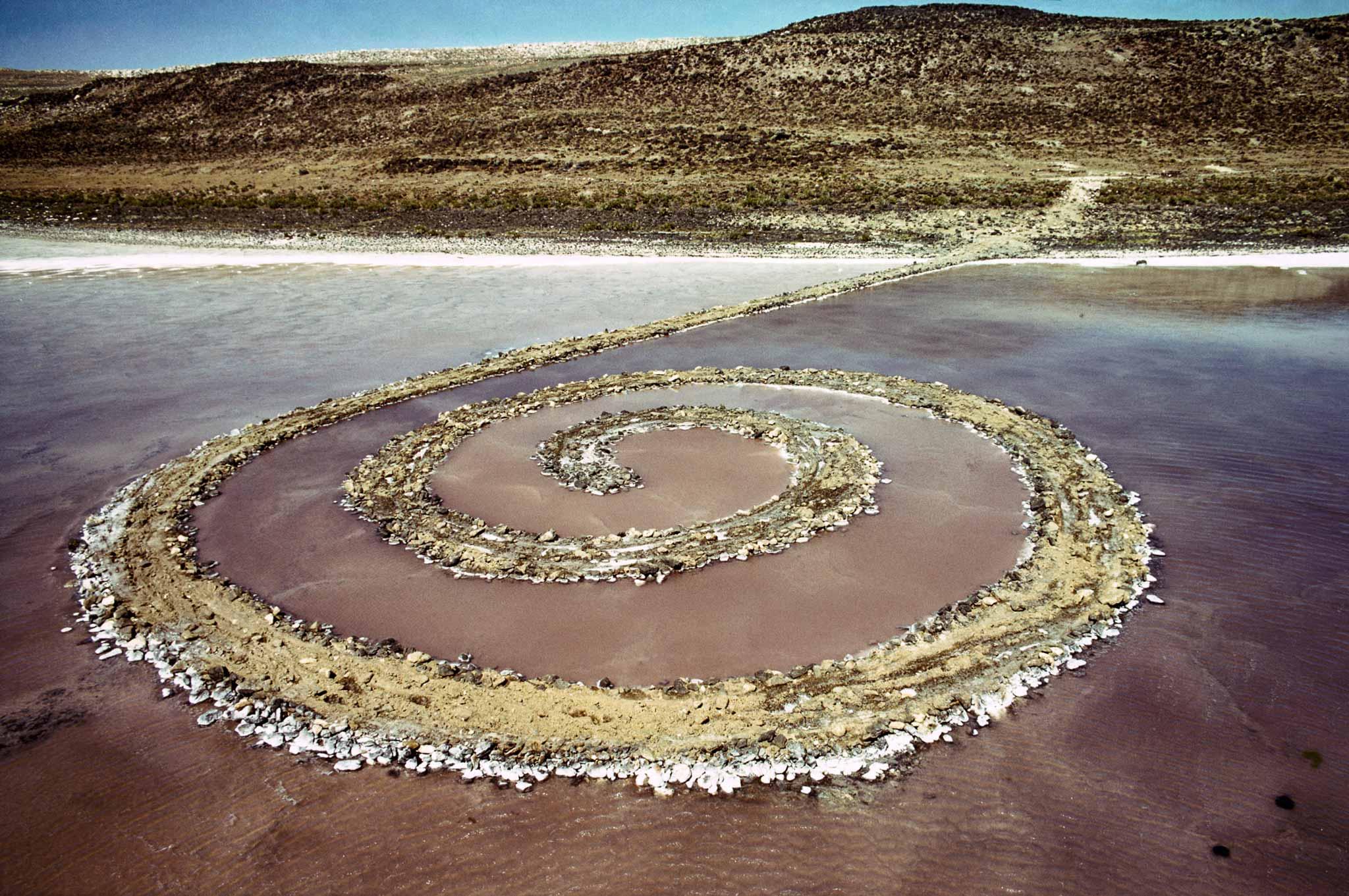
Christo & Jeanne Claude, The Gates, Central Park, NYC
In Central Park, NYC; site specific, covering 23 miles of park pathways. Temporary installation (only up for 2 weeks). Artists fund their projects through their company and recycle the materat the end.
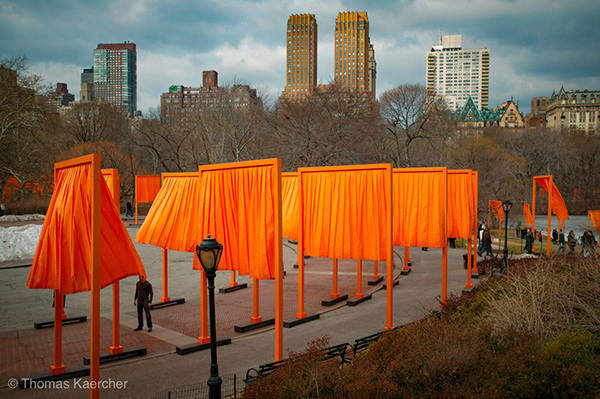
Luis Jimenez, Southwest Pieta, ASU
Original made for Albuquerque, New Mexico. This one is at ASU, outside of the art museum. Cast in fiberglass, a popular culture/commercial material. Makes reference to different cultural influences in the Southwest: Aztec myth, Mexico, local animals and plants, Christianity (Pieta is originally Christian iconography). Original controversy surrounding its installation and content.
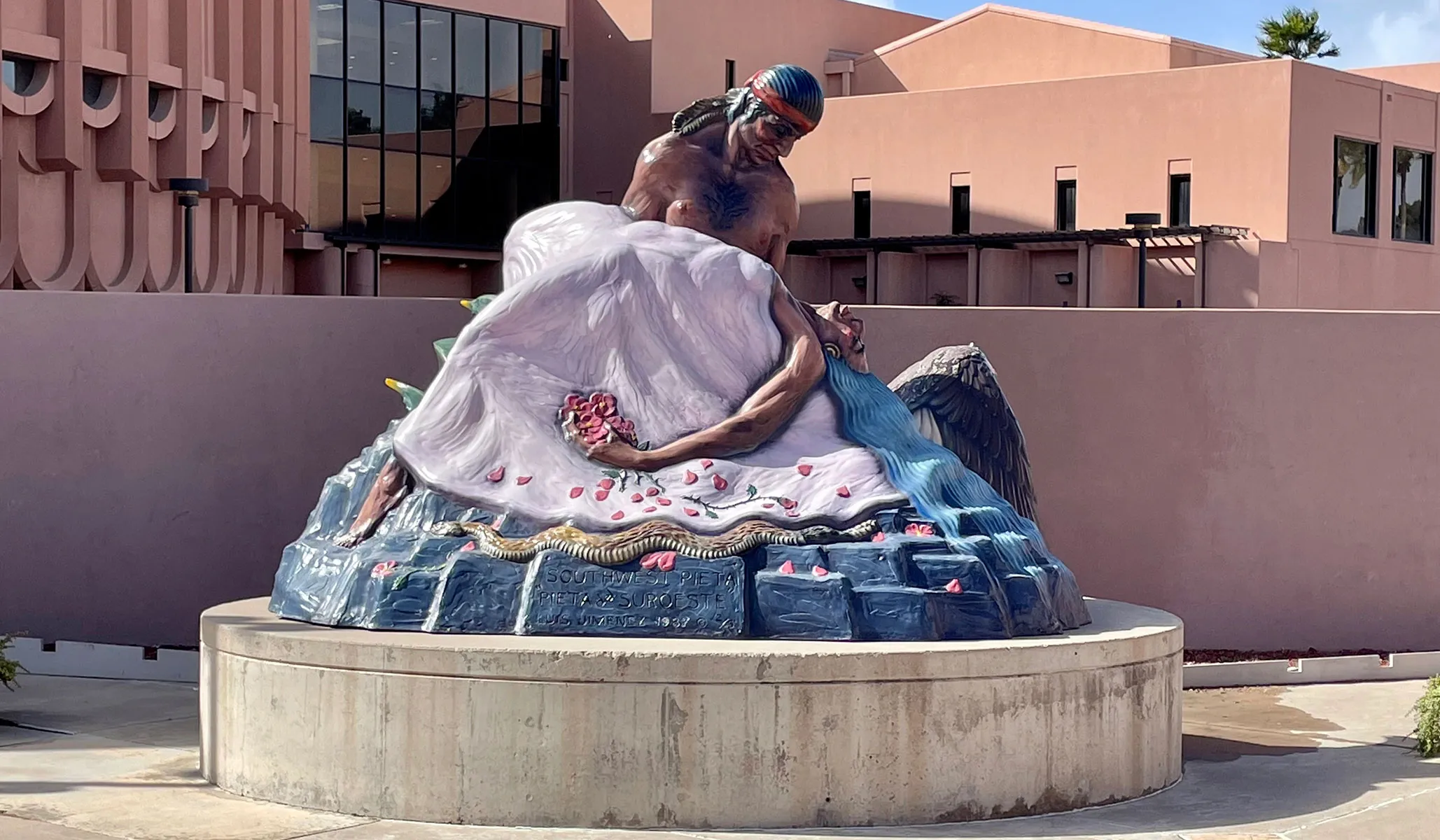
Maya Ying Lin, Vietnam Veterans Memorial, Washington D.C.
Controversial at first, because: the young, experienced artist if Asian decent; the color and shape (black, inverted V, “gash” on the national’s capital); the use of abstract rather than figural forms. Today, most people see it as very successful in conveying memory, respect, and dignity.

Relief Sculpture
Sculpture in which a carved or modeled form is raised (or in some cases lowered) from the plane or surface. High relief sculpture has a significant amount of difference between the background surface and the design, while low relief as very little difference between background and design.
Sculpture in-the-Round/Free-Standing Sculpture
Sculpture carved on all side so it can be viewed 360 degrees.
Subtractive Processes
Techniques in which material is taken away to create a form; carving.
Additive Processes
Techniques in which material is brought together/added to create a form; modeling, casting, constructing and assemblage.
Lost Wax Technique
Model made, covered in wax, and then heated. The wax melts away, and metal is poured in to fill the empty spots where the wax once was. This results in a metal sculpture.